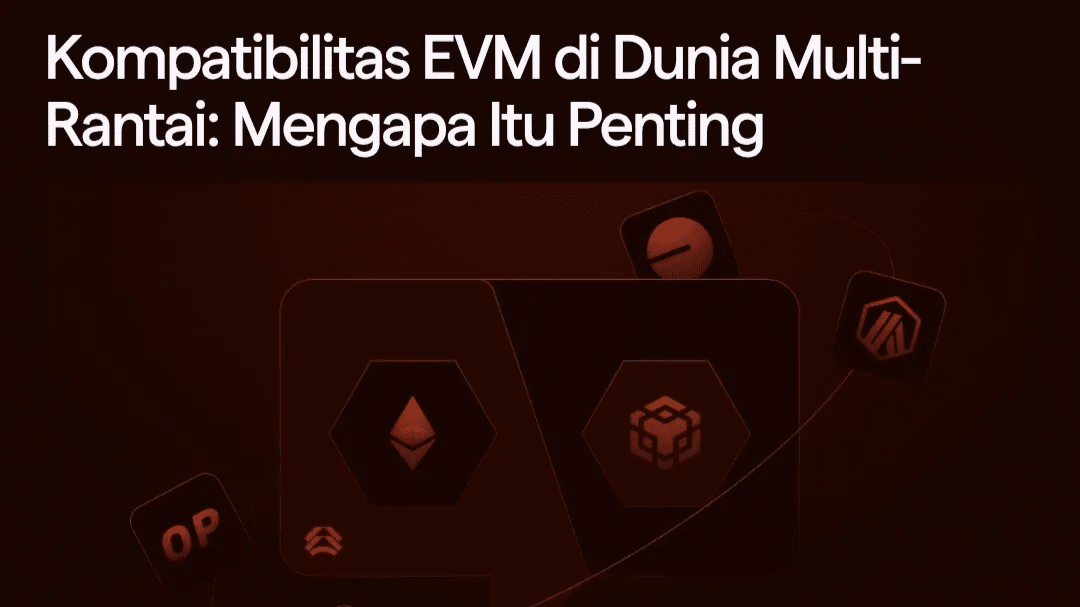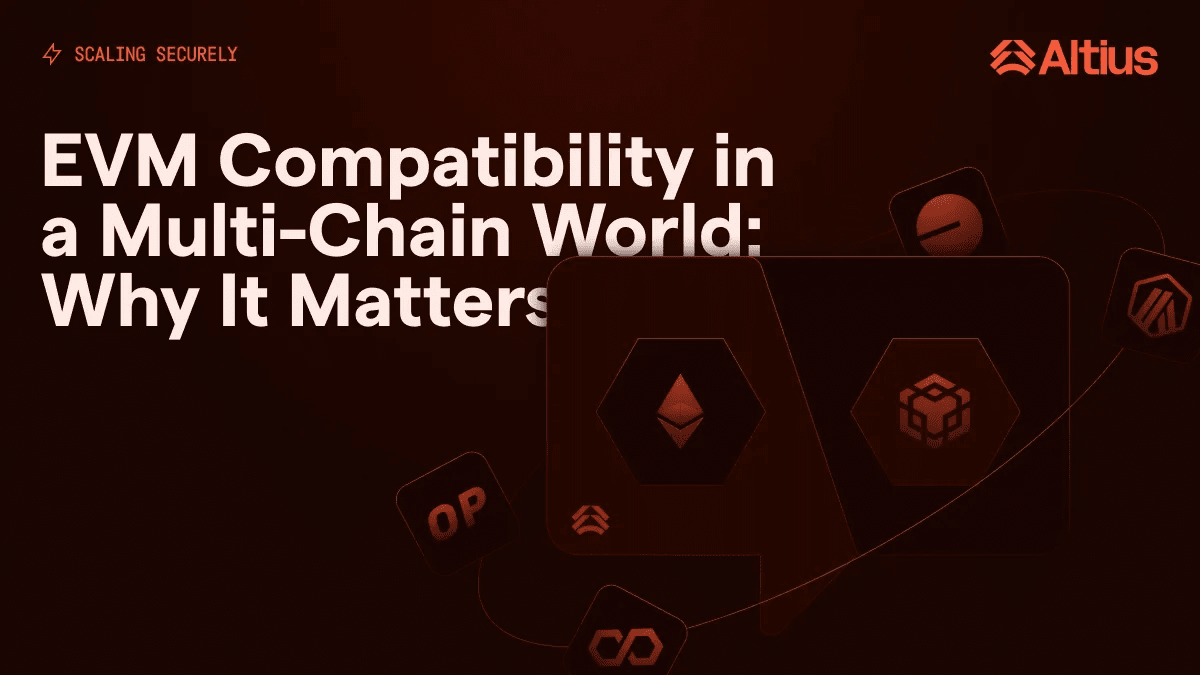
The blockchain landscape has evolved dramatically from Ethereum's dominance in the early days to the current multi-chain ecosystem. As developers and projects seek scalable solutions across various networks, one concept has emerged as a crucial bridge between innovation and practicality: EVM compatibility. This compatibility layer not only simplifies development — but also reshapes how we think about blockchain interoperability and cross-chain scalability.

Understanding EVM Compatibility
The Ethereum Virtual Machine (EVM) serves as the computing engine that executes smart contracts on the Ethereum blockchain. Think of it as the runtime environment where your Solidity code comes to life, processing transactions and managing state across the network. Since the launch of Ethereum, the EVM has become the de facto standard for smart contract execution, building a robust ecosystem of tools, libraries, and developer knowledge.
Why EVM Matters in Blockchain Architecture
The importance of EVM extends beyond Ethereum itself. The EVM is a standard approach for smart contract execution that is understood by millions of developers worldwide. This standardization has created a network effect where tools like Hardhat, Truffle, and MetaMask have been specifically optimized for EVM-based development. When new blockchains adopt EVM compatibility, they inherit this entire ecosystem rather than starting from scratch.
What Makes a Chain EVM-Compatible
EVM compatibility means a blockchain can execute Ethereum smart contracts without modification. This involves implementing the same opcodes, gas mechanics, and state management used by Ethereum. EVM-compatible chains process Solidity contracts exactly as Ethereum does, ensuring existing dApps can be seamlessly deployed across different networks. This compatibility extends to supporting Ethereum's JSON-RPC API, allowing existing wallets and tools to interact directly with new chains.
How EVM Compatibility Accelerates Web3 Development
The impact of EVM compatibility on Web3 development cannot be overstated. By maintaining consistency with the Ethereum execution environment, new blockchains drastically lower the barriers for developers and projects looking to expand their reach.
Developer Accessibility: Familiar Tools, Faster Development
EVM compatibility eliminates the learning curve that typically accompanies new blockchain platforms. Developers can continue to use Solidity for smart contract development, apply familiar Hardhat configurations, and debug using well-known tools like Remix IDE. This accessibility means projects can launch on new chains in days instead of months, as teams don’t need to rewrite smart contracts or learn new programming languages.
The benefits of the ecosystem grow over time. As more developers become skilled in using Ethereum tools, the talent pool for EVM-compatible chains grows exponentially. Universities teaching blockchain development focus on Solidity and Ethereum tools, creating a steady stream of developers ready to build on any EVM-compatible network.
Interoperability: Seamless Cross-Chain Integration
EVM-compatible blockchains can seamlessly interact with the vast Ethereum ecosystem. This interoperability manifests in several ways: cross-chain bridges can more easily verify and execute transactions between EVM chains, decentralized exchanges can list tokens from multiple EVM networks, and complex DeFi protocols can operate across chains without fundamental architectural changes.
This standardization also enables strong composability. DeFi protocols on Polygon can interact with liquidity from BNB Smart Chain and settle transactions on Ethereum while maintaining the same smart contract logic. This level of interoperability changes the way we think about blockchain networks — from isolated systems to interconnected components of a larger Web3 infrastructure.
Scalability and Efficiency: Beyond Ethereum's Limitations
Many EVM-compatible chains specifically address Ethereum's scalability challenges while retaining its developer experience. These networks achieve higher throughput and lower transaction costs through various consensus mechanisms, block time optimizations, and fee structures. Developers get the best of both worlds: a mature Ethereum ecosystem and the performance characteristics needed for mainstream adoption.
Cross-Chain Interoperability and Multi-Chain Ecosystem
The evolution towards a multi-chain world is not just a technical trend — it’s an economic necessity. No single blockchain can optimally serve all use cases, and users increasingly expect a seamless experience across different networks.
Why dApps Need to Move Between Ecosystems
Modern dApps require access to various sources of liquidity, user bases, and specific blockchain features. A game dApp may need Ethereum's security for high-value NFTs, Polygon's speed for in-game transactions, and BNB Smart Chain's low fees for microtransactions. Without cross-chain capabilities, projects face the impossible choice of either limiting functionality or maintaining separate codebases for each network.
User expectations also drive the need for multi-chain. As wallet interfaces become more sophisticated, users no longer need to think about which networks they are using — they want their assets and applications to work seamlessly across chains. This user-centric approach requires a foundational infrastructure that can support smooth cross-chain interactions.
How EVM Compatibility Supports Cross-Chain Standards
EVM compatibility creates a common language for cross-chain communication. When multiple networks share the same execution environment, they can more easily verify transactions with each other, share status information, and coordinate complex multi-chain operations. This compatibility enables sophisticated cross-chain protocols that would be very complicated if each network used different virtual machines and standards.
Common standards also facilitate the development of universal tools and interfaces. A single wallet can interact with EVM-compatible networks, cross-chain bridges can use standard verification methods, and developers can create applications that function identically across different chains.
Case Study: The Success of Polygon and BNB Smart Chain
The rising popularity of Polygon demonstrates the power of EVM compatibility. By maintaining full compatibility with Ethereum while offering faster transactions and lower fees, Polygon attracts major projects like Aave, Uniswap, and OpenSea. The transition is smooth for developers and users — existing Ethereum dApps can be used on Polygon with minimal changes, and users can access them through the same wallets and interfaces.
BNB Smart Chain follows a similar strategy, combining EVM compatibility with the vast Binance user base and ecosystem. The network quickly became a hub of DeFi innovation, demonstrating how EVM compatibility can accelerate ecosystem growth when coupled with strong community support and infrastructure.
Both networks demonstrate that EVM compatibility is not just about technical convenience — it is a strategic advantage that can determine the success of a blockchain in attracting developers, users, and capital.
Introducing Altius Labs’ EVM-Compatible Execution Layer
While most discussions about EVM compatibility focus on full blockchain networks, Altius Labs takes a different approach. Instead of building another EVM-compatible chain, Altius provides a modular EVM-compatible execution layer that can be integrated with any blockchain, bringing the Ethereum developer experience to any underlying architecture.
This modular approach addresses a critical gap in the current blockchain landscape. Many promising blockchain projects struggle to attract developers due to a lack of EVM compatibility, while building full EVM support from scratch requires significant engineering resources and time.
Key Advantages of Altius Execution Layer
The Altius execution layer offers plug-and-play EVM support that can be integrated into any blockchain architecture. This modularity means that chains can focus on their core innovations — whether it’s new consensus mechanisms, specific use cases, or unique tokenomics — while leveraging Altius for familiar smart contract execution.
The execution layer provides full compatibility with Ethereum's tooling, supporting Solidity smart contracts, Hardhat deployment scripts, and MetaMask interactions without modification. Developers can deploy existing Ethereum dApps to any Altius-integrated chain using the same commands and configurations they use for the Ethereum mainnet.
Performance optimizations are built into the execution layer, with features designed to enhance Ethereum's limitations while maintaining full compatibility. These include improved gas efficiency, faster transaction processing, and optimized state management that can significantly enhance the user experience.
How It Works in Practice
When blockchains integrate the Altius execution layer, they gain direct access to the entire Ethereum ecosystem and other chains. Smart contracts deployed through Altius run with the same security and determinism as those deployed on Ethereum, but benefit from the unique advantages of the host chain — whether it’s faster block times, different consensus mechanisms, or specific features.
The integration process is designed to be straightforward, allowing blockchain teams to add EVM compatibility without fundamental changes to existing architecture. This approach democratizes access to the Ethereum developer ecosystem, enabling innovative blockchain projects to compete with existing EVM-compatible networks.
Cross-chain interactions become smoother as multiple networks use the Altius execution layer, as they share standardized interfaces and execution environments. This compatibility enables sophisticated cross-chain applications that can leverage the unique strengths of various blockchain networks while maintaining consistent smart contract behavior.
Why This Matters for the Future of Web3
The Altius approach represents a shift towards modular blockchain architecture, where specific components can be combined to create solutions optimized for specific use cases. This modularity accelerates innovation by allowing blockchain projects to focus on their core value propositions while leveraging proven solutions for common requirements such as smart contract execution.
The execution layer approach also supports true interoperability. Rather than having dozens of incompatible blockchain networks, we can have a diverse ecosystem of specialized chains that all support the same execution environment. This compatibility enables the kind of seamless cross-chain experience that mainstream Web3 adoption needs.
Final Thoughts
EVM compatibility has evolved from mere technical convenience to a strategic necessity in today's multi-chain world. This compatibility allows developers to build once and deploy anywhere, creating a seamless user experience across different networks, and facilitating the kind of interoperability that is the hallmark of the future of Web3.
The Altius Labs modular execution layer represents the next evolution of this trend, providing EVM compatibility as a service that any blockchain can integrate. This approach promises to accelerate Web3 development by making the mature Ethereum ecosystem accessible to any blockchain, regardless of its underlying architecture.
As we continue to build a truly interconnected Web3 ecosystem, EVM compatibility will remain a crucial bridge between innovation and adoption. Solutions like the Altius execution layer ensure this compatibility can scale as blockchain networks diversify, creating a foundation for decentralized applications in the future.
How's it going guys? 🔥 Are you interested in learning more about Altius? Let's follow its social media:
— X: @AltiusLabs
— Telegram: t.me/altiuslabs
— Discord: discord.gg/altiuslabs